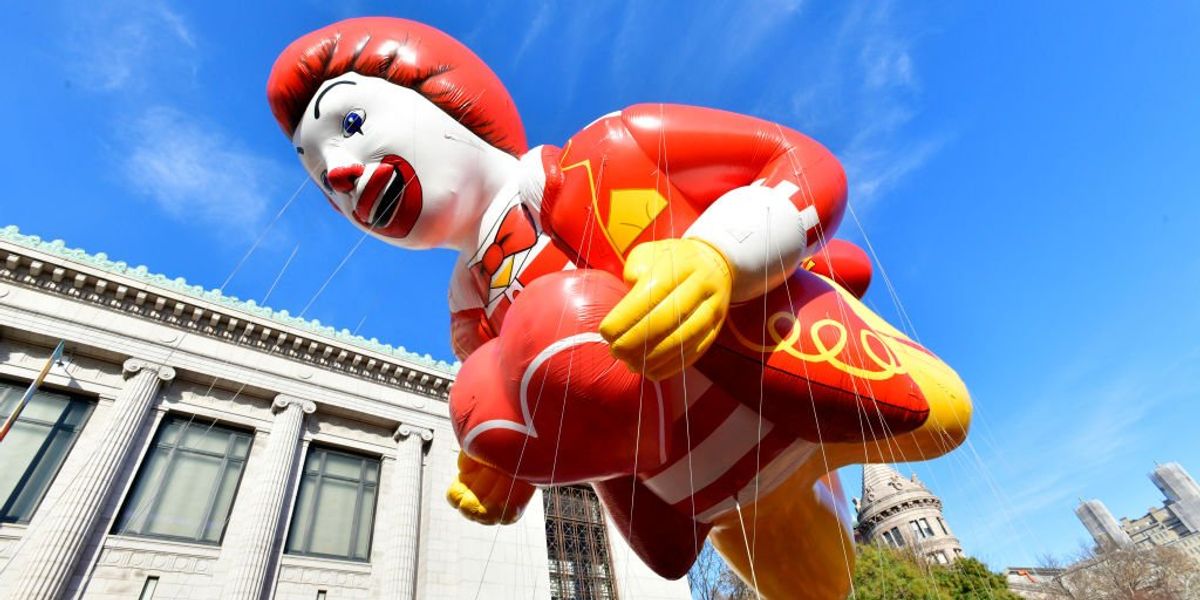The government uses the U.S. Bureau of Labor Statistics’
Consumer Price Index to measure inflation.
For instance, when President Joe Biden took office, the year-over-year inflation rate was roughly 1.4%. CNN
indicated the Biden inflation rate reached a 40-year high of 9.1% in June 2022.
Last week, the Labor Department
recently indicated that the CPI for all urban consumers “increased by 0.3 percent in April on a seasonally adjusted basis, after rising 0.4 percent in March[.] … Over the last 12 months, the all items index increased 3.4 percent before seasonal adjustment.”
According to the BLS inflation calculator, prices generally increased by approximately 21.5% between December 2019 and March 2024,
according to TheStreet.
Some consumers have
apparently turned instead to fast-food prices to gauge just how much purchasing power they have lost in recent years.
FinanceBuzz has made historical price comparisons easier,
contrasting fast-food menu prices in 2014 and prices in 2024 on the basis of pricing data sourced from ItsYummi.com, FastFoodMenuPrices.com, and MenuWithPrice.com, cross-referenced with restaurants’ official websites.
The breakdown claimed that the price of:
- the McChicken increased by 199% over the 10-year stretch, from $1.00 in 2014 to $2.99 in 2014;
- the McDouble increased by 168%, from $1.19 to $3.19;
- medium fries by 138%, from $1.59 to $3.79;
- the Quarter Pounder with Cheese Meal by $122%, from $5.39 to $11.99;
- the Oreo McFlurry by 88%, from $2.39 to $4.49;
- the 10 Piece McNugget Happy Meal by 83%, from $5.99 to $10.99;
- the 4 Piece McNugget Happy Meal by 67%, from $2.99 to $4.99;
- the Big Mac by 50%, from $3.99 to $5.99; and
- the price of a medium drink increased by 25%, from $1.29 to $1.61.
McDonald’s — which has
reportedly contested the figures, saying “pricing is set by individual franchisees and varies by restaurant” — is not the only restaurant suffering what some are calling “McFlation.”
Popeyes Louisiana Kitchen’s menu items have, on average, allegedly jumped by 86% in price since 2014. Taco Bell has reportedly seen an 81% average increase. Dining out at Chipotle Mexican Grill now, 10 years later, apparently costs 75% more.
It appears some of the more dramatic price increases have taken place over the past four years.
TheStreet
indicated that the price of medium French fries at McDonald’s increased by 134.1%, from $1.79 to $4.19 since 2019; the price of the McChicken increased by 201.6%, from $1.29 to $3.89; the price of the Big Mac increased by 87.7%, from $3.99 to $7.49; and price of the cheeseburger increased by 215%, from $1 to $3.15.
McDonald’s CEO Chris Kempczinski told analysts in February, “I think what you’re going to see as you head into 2024 is probably more attention to what I would describe as affordability,”
reported Fortune.
‘Eating at home has become more affordable.’
At the time, customers were prickled by the cost of Big Mac meals, which were going for around $18, as well as the absence of any single $1 item on McDonald’s so-called Dollar Menu.
“Eating at home has become more affordable,” added Kempczinski.
Shubhranshu Singh, associate professor of marketing at the Johns Hopkins Carey Business School, told FinanceBuzz, “A number of factors have contributed to the rising costs of fast food. First, food prices are outpacing inflation. Wage rate is also rising faster than inflation. In other words, the cost of preparing and serving fast food is rising faster than the inflation rate.”
Singh suggested further that “due to increasing pressure to spend less, some consumers have also downgraded from full-service restaurants to fast-food restaurants, thus increasing the overall demand for fast food.”
‘The war in Ukraine and other factors contributed to higher food costs.’
“Because of the increasing need to take multiple jobs and less time to prepare or enjoy food, consumers’ preferences for fast food have become stickier; that is, they are willing to accept higher prices,” continued Singh. “To make matters worse for fast-food restaurants, consumers are tipping less at low- and no-service restaurants. Fast-food restaurants are responding by raising prices.”
Michael Bognanno, professor of economics at Temple University, told FinanceBuzz that extra to post-pandemic competition for low-wage workers, which drove up wages — costs in many cases passed onto customers — “the war in Ukraine and other factors contributed to higher food costs. Energy prices, notably for the cost of electricity, rose more than 10% in 2022 and are still increasing at a rate that exceeds the rate of inflation.”
Prices are also being driven up further by minimum wage hikes in states such as California, where
every fast-food restaurant has to pay its employees a minimum wage of $20 per hour — except for the chain run by Democratic Gov. Gavin Newsom’s billionaire buddy.
Less than a month into the new wage hike, Kalinowski Equity Research indicated prices at some restaurants had jumped up by as much as 8%,
reported KNBC-TV.
The California Restaurant Association said, “Since it took effect, job losses, reduced working hours, restaurant closures, and higher prices for California’s inflation-weary consumers have been ongoing.”
Like Blaze News? Bypass the censors, sign up for our newsletters, and get stories like this direct to your inbox. Sign up here!
